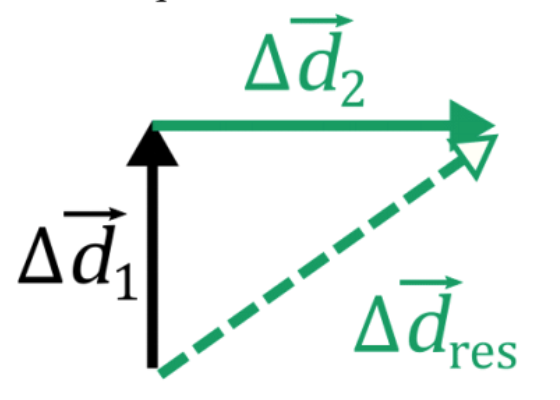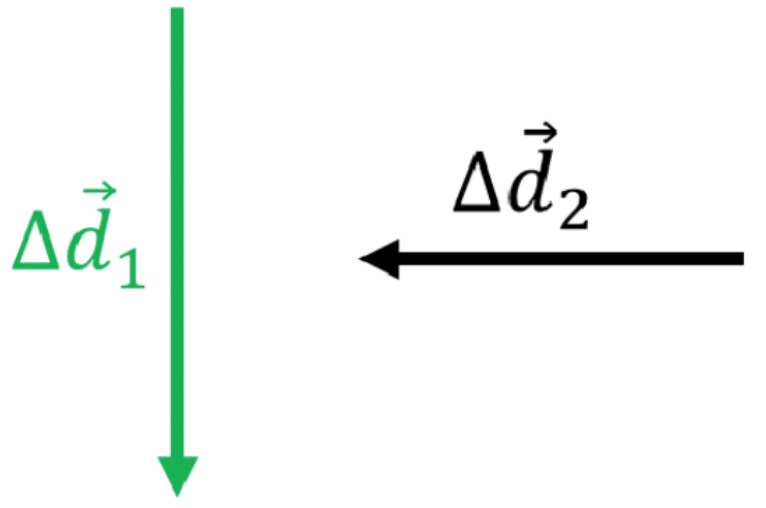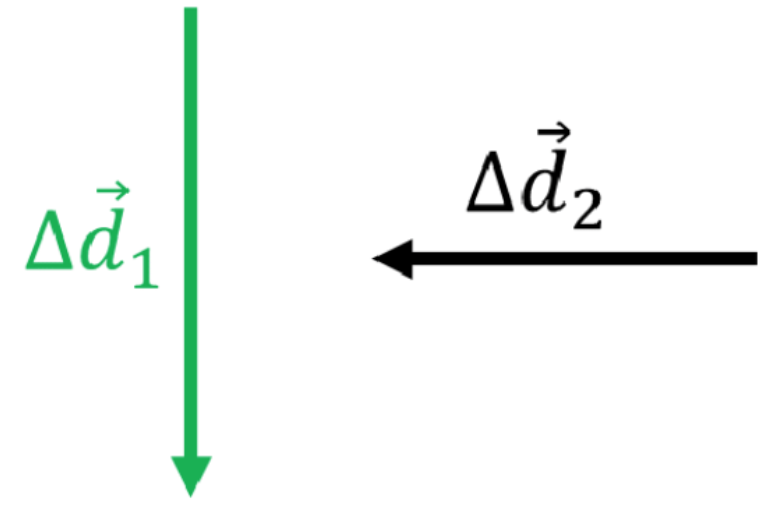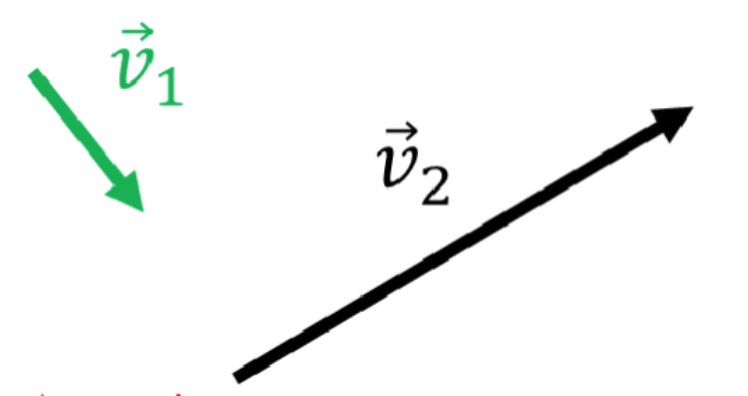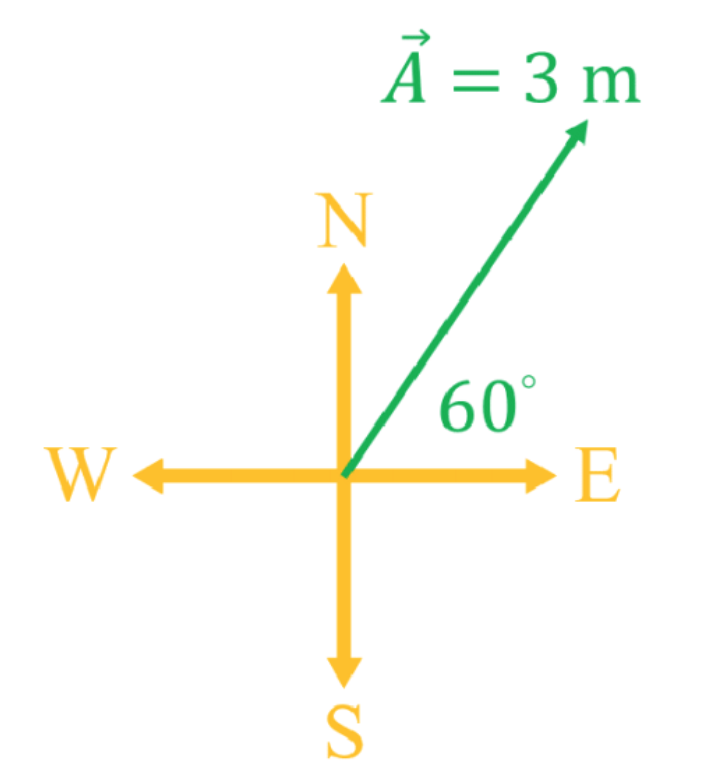- How to do addition, subtraction, multiplication and division on vectors in two dimensions
- How to describe the angles of two dimensional vectors
- How to solve for the angle and magnitude of two dimensional vectors with trigonometry.
Notes:
-
When adding, subtracting, multiplying, and dividing vectors in two dimensions, the same rules are followed as in one dimensional problems:
- When vectors are added, the vector diagram is drawn by tip-to-tail addition. To add and , draw the vector , then starting at the tip of draw . The tail of connects to the tip of .
- Taking the negative of a vector "flips" the vector to point in the opposite direction, while keeping the same magnitude.
- Multiplying or dividing a vector by a positive scalar changes the magnitude of the vector, while keeping the same direction.
- The graphical solution to a vector problem in two dimensions can make a vector triangle that can be solved using trigonometry.
- In this course we will be using navigational notation to specify the angles of vectors, which also called to compass notation when compass directions are used in the problem. Some examples of this notation:
- To specify a displacement of 1 m directly northwest, write 1 m [45° N of W].
- To specify a velocity that that is 1 m/s at an angle of 30° above the ground, write 1 m/s [30° above horizontal]
(Pythagorean theorem)
: angle, in degrees (°)
: side opposite angle
: side adjacent angle
: hypotenuse of triangle (longest side, side opposite 90° angle)
and : non-hypotenuse sides of triangle
: hypotenuse of triangle

